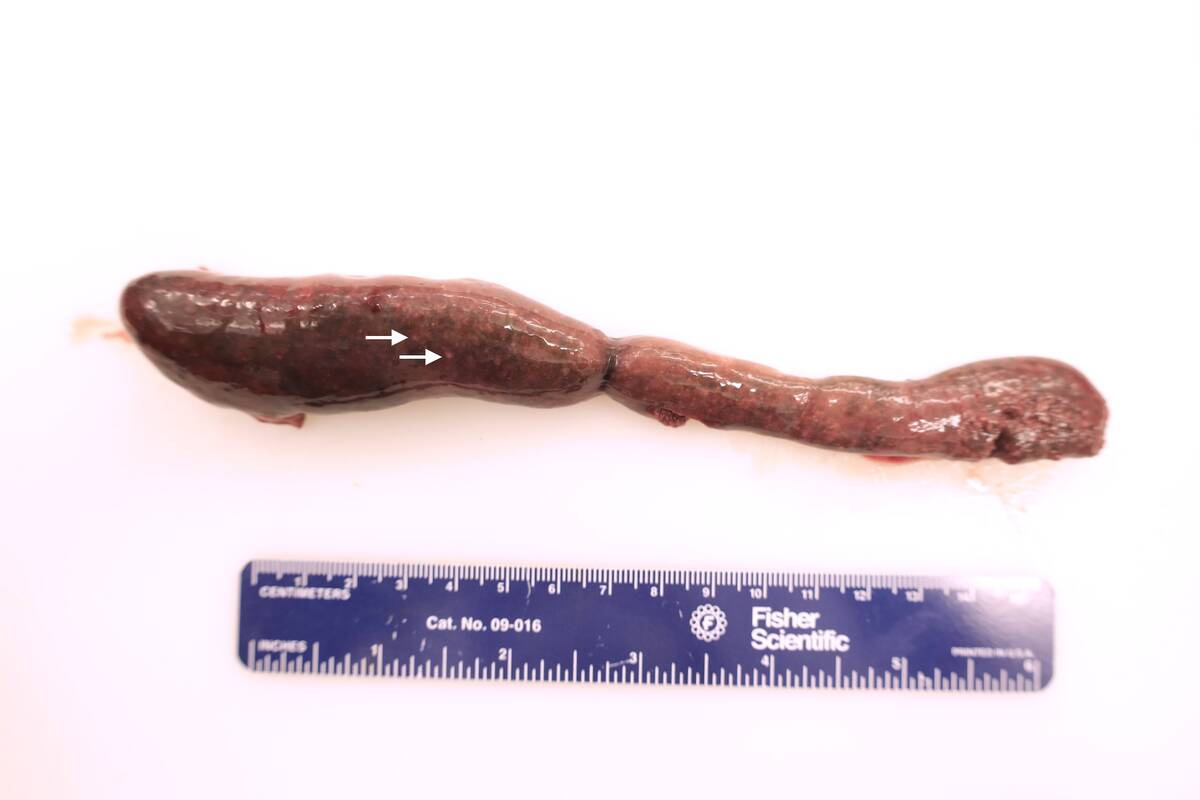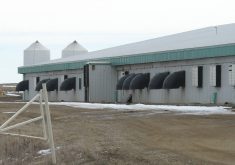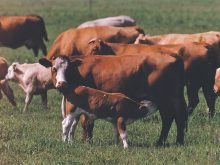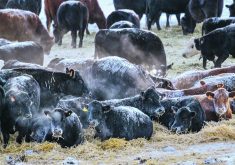Salt poisoning, contrary to what the name suggests, is not usually caused by excessive salt ingestion.
It is more likely to occur when cattle are deprived of water, such as when water lines freeze or if water is mistakenly cut off. In these cases, signs of poisoning occur when the water is turned on again.
Salt toxicity is seen occasionally when cattle drink a large amount of salty water or heavily salted feed such as whey, fish meal or some bakery products.
Severity of clinical signs parallels salt intake.
Read Also

Tularemia continues to pose health risk on the Prairies
The pathogen that causes tularemia can survive for months in the environment, including wetlands, and is spread through direct contact or inhalation from these sources.
In the case of water deprivation, the first physiological change is dehydration. Body fluids are continuously lost through breathing and body excretions, so the animal becomes dehydrated.
This increases the concentration of sodium in the blood. The only signs will be lethargy, poor appetite and possibly diarrhea.
When the sodium content of the blood rises, it diffuses across the blood-brain barrier and builds up in the brain. High concentrations of sodium activate the thirst receptors. Cattle will become maniacal in their quest for water.
If affected cattle are allowed free access to fresh water at this time, they will drink a tremendous amount.
Once in the stomach, the fluid is absorbed into the bloodstream and moves into the tissues, returning them to normal hydration.
Unfortunately, the brain acts differently. Unlike other tissues where sodium and water can freely move, the brain readily allows water in but sodium ions can’t leave with the same speed.
The resulting fluid accumulation (edema) increases pressure in the head, which triggers neurological problems.
Nervous signs of water deprivation include blindness, star-gazing, aggressiveness, head-pressing, muscle twitches and seizures.
Treatment of cattle with salt poisoning is difficult. Most die, even with intensive treatment.
In the case of water deprivation, uncontrolled access to water once the problem is discovered will readily cause death. Water intake must be initially restricted and then slowly increased over time.
Administration of regular intravenous fluids to rehydrate the animals has the same effect as giving water orally at a rapid rate. It is not recommended.
Hypertonic saline, fluids that contain a high amount of sodium, can be given intravenously. These fluids slowly rehydrate the cattle without promoting brain edema. The body and brain can adjust slowly to the fluids.
Hypertonic fluid therapy should be done in a hospital setting because blood sodium concentrations must be measured twice daily.
Careful monitoring allows accurate adjustments in fluid intake, which will prevent blood levels from changing too rapidly.
Because of difficulties in treatment, prevention of salt toxicity is key. Feed and water with high salt content must be avoided. More importantly, water must always be readily available.
















